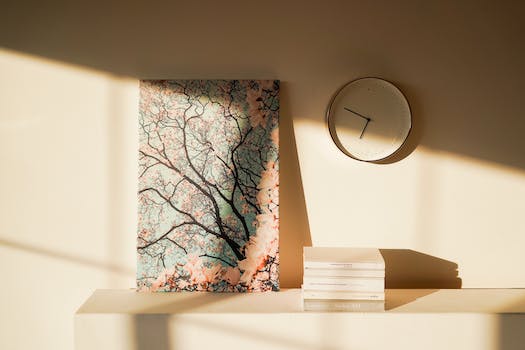

-
Table of Contents
Unveiling the Secrets of Ancient Egypt
Introduction
"The Gaze of the Pharaoh" refers to the captivating and enigmatic stare depicted in ancient Egyptian art, particularly in the statues and portraits of pharaohs. This intense gaze, often characterized by a fixed and penetrating stare, has intrigued scholars and art enthusiasts for centuries. It is believed to symbolize the divine power and authority of the pharaohs, as well as their connection to the gods and the afterlife. The Gaze of the Pharaoh serves as a powerful reminder of the significance and mystique surrounding ancient Egyptian civilization.
The Symbolism of the Pharaoh's Gaze in Ancient Egyptian Art
The ancient Egyptians were known for their intricate and symbolic art, which often depicted their beliefs and values. One recurring motif in their art was the gaze of the pharaoh, which held great significance in ancient Egyptian culture. The pharaoh was considered a divine ruler, a god on earth, and his gaze was believed to possess immense power.
In ancient Egyptian art, the pharaoh's gaze was often depicted as intense and penetrating. The eyes of the pharaoh were usually large and almond-shaped, with a fixed, unwavering stare. This was not a mere artistic choice, but a deliberate representation of the pharaoh's authority and control. The pharaoh's gaze was meant to convey his ability to see and understand everything, to have complete knowledge and insight.
The symbolism of the pharaoh's gaze can be seen in various forms of ancient Egyptian art, such as statues, reliefs, and paintings. One famous example is the Great Sphinx of Giza, which has a face that combines human and lion features. The Sphinx's gaze is directed straight ahead, as if it is watching over the entire landscape. This represents the pharaoh's role as a protector and guardian of Egypt, always vigilant and aware of any threats.
Another example is the famous bust of Queen Nefertiti, which showcases her captivating gaze. Nefertiti was the wife of Pharaoh Akhenaten and played a significant role in the religious and artistic revolution of the Amarna period. Her gaze is serene yet powerful, reflecting her status as a queen and her influence over the pharaoh.
The pharaoh's gaze was not only a symbol of power and authority but also had religious connotations. The ancient Egyptians believed that the pharaoh was a link between the mortal world and the divine realm. His gaze was believed to have the ability to communicate with the gods and receive their guidance. It was through the pharaoh's gaze that the gods bestowed their blessings upon the people of Egypt.
The pharaoh's gaze also had a practical purpose in ancient Egyptian society. It served as a form of propaganda, reinforcing the pharaoh's authority and legitimacy. By depicting the pharaoh with a powerful and commanding gaze, the ancient Egyptians sought to instill a sense of awe and reverence in their subjects. The pharaoh's gaze was a constant reminder of his divine right to rule and the consequences of defying his authority.
The symbolism of the pharaoh's gaze extended beyond the realm of art and into everyday life. The ancient Egyptians believed that the pharaoh's gaze could protect them from evil and bring them good fortune. They would often wear amulets or charms depicting the pharaoh's eyes, believing that these would ward off evil spirits and bring them luck and prosperity.
In conclusion, the symbolism of the pharaoh's gaze in ancient Egyptian art was multifaceted and deeply ingrained in their culture. It represented the pharaoh's power, authority, and connection to the divine. The pharaoh's gaze was a visual reminder of his role as a protector and guardian of Egypt, as well as a form of propaganda to reinforce his authority. It was believed to possess the ability to communicate with the gods and bring blessings to the people. The pharaoh's gaze was not just a mere artistic representation but a powerful symbol that permeated all aspects of ancient Egyptian society.
Unraveling the Mystery: Exploring the Power and Significance of the Pharaoh's Gaze

The gaze of the Pharaoh has long been a subject of fascination and intrigue. From ancient Egypt to modern times, the power and significance of the Pharaoh's gaze have captivated scholars and historians alike. In this article, we will delve into the mystery surrounding the Pharaoh's gaze, exploring its origins, its symbolism, and its lasting impact on Egyptian society.
The Pharaoh, as the ruler of ancient Egypt, held immense power and authority. It was believed that the Pharaoh possessed a divine connection, serving as a bridge between the mortal world and the gods. This divine status was reflected in the Pharaoh's gaze, which was said to possess a mesmerizing and commanding presence. The Pharaoh's gaze was believed to have the power to heal, protect, and even curse those who encountered it.
One of the earliest depictions of the Pharaoh's gaze can be found in the famous Narmer Palette, dating back to around 3100 BCE. On this ancient artifact, the Pharaoh is shown with his eyes enlarged and staring directly at the viewer. This portrayal of the Pharaoh's gaze as intense and penetrating would become a recurring theme in Egyptian art and iconography.
The symbolism of the Pharaoh's gaze extended beyond the realm of art. It was believed that the Pharaoh's gaze had the ability to bestow blessings and favor upon his subjects. This belief was so deeply ingrained in Egyptian society that it led to the development of a complex system of rituals and ceremonies centered around the Pharaoh's gaze. These rituals were performed to ensure the Pharaoh's continued protection and to seek his guidance and wisdom.
The Pharaoh's gaze also played a crucial role in the religious and spiritual beliefs of ancient Egyptians. It was believed that the Pharaoh's gaze could communicate with the gods and convey their will to the people. This belief was reinforced by the construction of temples and statues dedicated to the Pharaoh, where his gaze was prominently displayed. These temples and statues served as focal points for religious ceremonies and rituals, with the Pharaoh's gaze acting as a conduit between the mortal and divine realms.
The power and significance of the Pharaoh's gaze did not end with the fall of ancient Egypt. Even today, the Pharaoh's gaze continues to captivate and inspire. The enduring legacy of the Pharaoh's gaze can be seen in the countless depictions of ancient Egyptian art and in the popular imagination. From movies to literature, the Pharaoh's gaze is often portrayed as a symbol of power, mystery, and authority.
In conclusion, the gaze of the Pharaoh is a subject that continues to fascinate and intrigue. Its origins can be traced back to ancient Egypt, where it was believed to possess divine power and authority. The symbolism of the Pharaoh's gaze extended beyond the realm of art, playing a crucial role in religious and spiritual beliefs. Today, the Pharaoh's gaze remains a powerful symbol, representing the enduring legacy of ancient Egypt and its enigmatic rulers.
The Gaze of the Pharaoh: A Window into Ancient Egyptian Beliefs and Culture
The Gaze of the Pharaoh: A Window into Ancient Egyptian Beliefs and Culture
The ancient Egyptians were a civilization deeply rooted in their beliefs and culture. One of the most fascinating aspects of their society was their reverence for the pharaoh, the ruler who was believed to be a divine figure. The gaze of the pharaoh, captured in their art and sculptures, provides us with a unique insight into the religious and cultural practices of this ancient civilization.
In ancient Egypt, the pharaoh was considered to be the intermediary between the gods and the people. They were believed to possess divine powers and were revered as living gods on earth. This belief is evident in the way the pharaohs were depicted in their art. The statues and reliefs of pharaohs show them with a stern and commanding gaze, symbolizing their authority and divine connection.
The gaze of the pharaoh was not only a representation of their power but also a reflection of their role as the protector of the people. The pharaoh was responsible for maintaining order and harmony in society, and their gaze conveyed a sense of watchfulness and vigilance. This is evident in the famous statue of Pharaoh Khafre, where his eyes are wide open, as if constantly surveying his kingdom.
The pharaoh's gaze also played a significant role in the religious beliefs of the ancient Egyptians. It was believed that the pharaoh's eyes had the power to see into the spiritual realm and communicate with the gods. This is why the eyes of the pharaoh were often depicted as large and expressive, symbolizing their ability to connect with the divine.
The gaze of the pharaoh was not limited to their physical representations. It was also believed that the pharaoh's gaze could extend beyond their statues and reliefs. This is evident in the concept of the "Eye of Ra," which was believed to be the pharaoh's all-seeing eye. The Eye of Ra was a symbol of protection and was often depicted as a falcon or a lioness. It was believed that the pharaoh's gaze, embodied in the Eye of Ra, could ward off evil and bring prosperity to the kingdom.
The pharaoh's gaze also had a practical purpose in ancient Egyptian society. It was believed that the pharaoh's gaze could influence the behavior of the people. This is why the pharaoh's statues were often placed in prominent locations, such as temples and palaces. The presence of the pharaoh's gaze was believed to inspire loyalty and obedience among the people.
In conclusion, the gaze of the pharaoh provides us with a fascinating window into the beliefs and culture of ancient Egypt. It symbolized the pharaoh's divine authority, their role as protectors of the people, and their ability to connect with the gods. The pharaoh's gaze was not only a representation of power but also a practical tool for maintaining order and inspiring loyalty. Through their art and sculptures, the ancient Egyptians immortalized the gaze of the pharaoh, allowing us to glimpse into their rich and complex civilization.
Q&A
1. What is "The Gaze of the Pharaoh"?
"The Gaze of the Pharaoh" is a book written by Dr. Zahi Hawass, an Egyptian archaeologist and former Minister of State for Antiquities Affairs in Egypt.
2. What is the book about?
The book explores the mysteries and secrets of ancient Egyptian civilization, focusing on the role of pharaohs and their significance in Egyptian history and culture.
3. Who is the author of "The Gaze of the Pharaoh"?
The author of "The Gaze of the Pharaoh" is Dr. Zahi Hawass.
Conclusion
The Gaze of the Pharaoh is a captivating and mysterious novel that delves into the ancient world of Egypt. It explores the power dynamics, secrets, and intrigues surrounding the pharaohs and their rule. With its rich historical backdrop and well-developed characters, the novel keeps readers engaged from beginning to end. The author's vivid descriptions and attention to detail bring the ancient Egyptian civilization to life, making it a must-read for fans of historical fiction and ancient history enthusiasts. Overall, The Gaze of the Pharaoh is a compelling and immersive journey into the world of pharaohs, offering a unique perspective on the lives and struggles of these ancient rulers.












